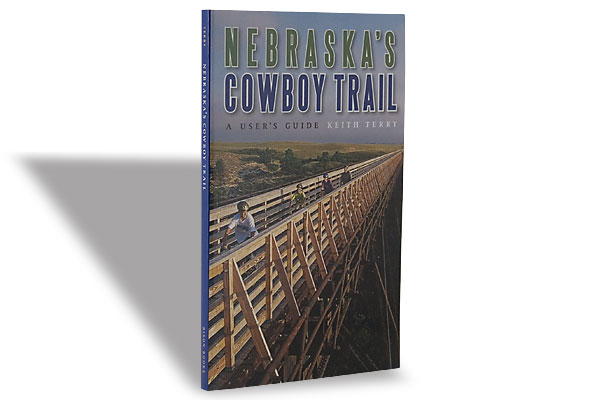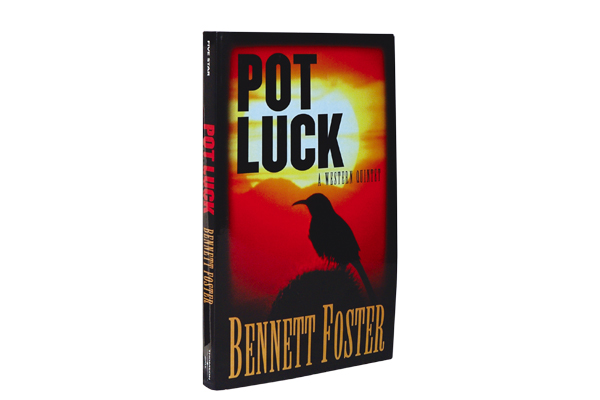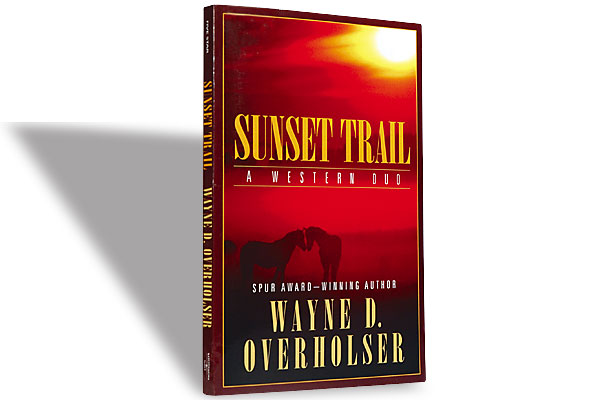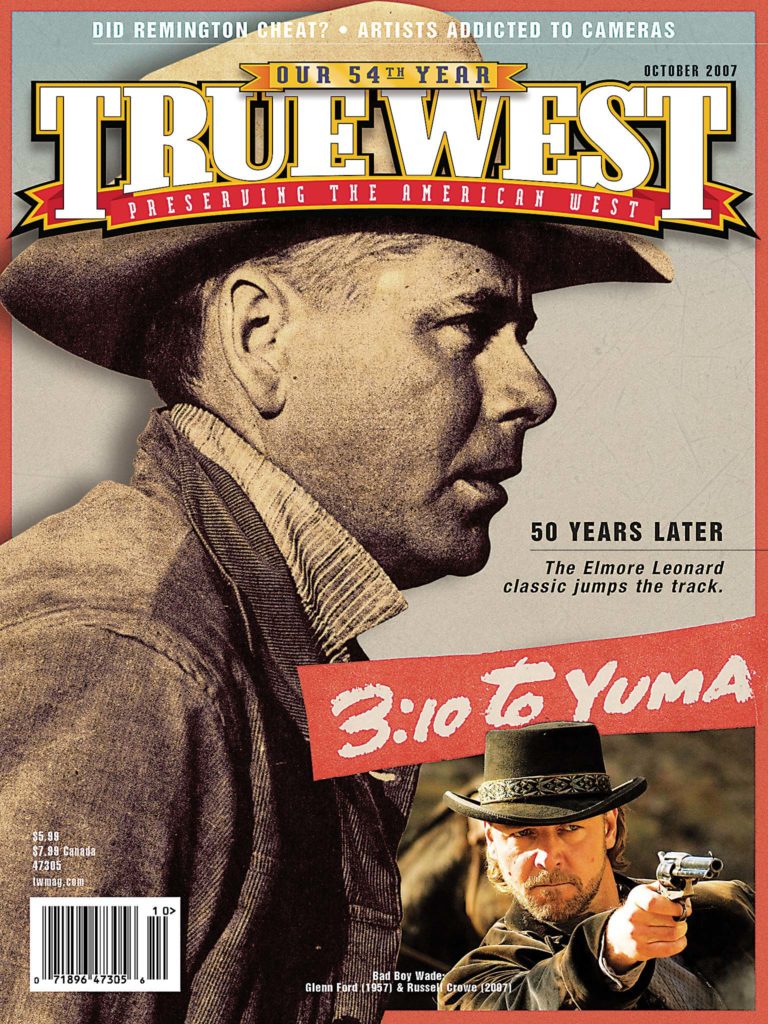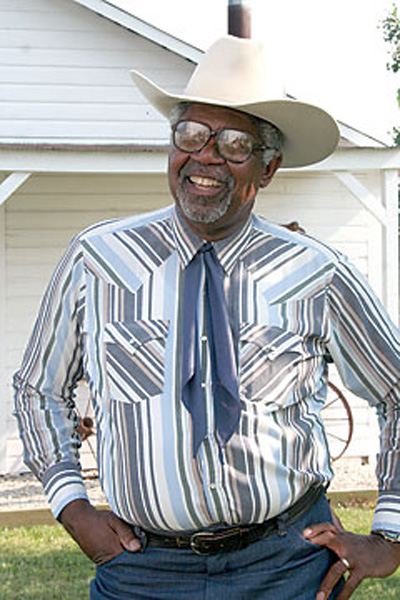 Clay Mann branded his cows with a large “80” that stretched across their side. It was this 80 brand that changed Daniel Webster Wallace’s name for most of those who knew him to “80 John.” He continued to work for Mann and established his reputation as a number one cowboy and as a confidant who could be trusted with any discreet assignment.
Clay Mann branded his cows with a large “80” that stretched across their side. It was this 80 brand that changed Daniel Webster Wallace’s name for most of those who knew him to “80 John.” He continued to work for Mann and established his reputation as a number one cowboy and as a confidant who could be trusted with any discreet assignment.
—From African American National Biography
If you’ve ever been in a room—or out in the country—with Michael N. Searles, you are likely to remember it. Or at least you will remember his laugh. It is big and boisterous, as large as the West that he has come to love and write about. In fact, this writer likely studies and documents the West because other places aren’t big enough for his enthusiasm and rowdy spirit.
Born and reared in Edwardsville, Illinois, Mike says “[I] thought that I was [a] cowboy from my earliest years. I had a cowboy outfit and two ‘buntline specials’ that I proudly wore.” Not until he was an adult, did he venture into the West.
Early on, Cowboy Mike read The Adventure of the Negro Cowboys by Durham and Jones. “I had never heard of black cowboys before reading that book,” he said. His persona changed forever a few years later when he was teaching in Georgia and drove some students to Williamsburg, Virginia. On the trip, “[I] stopped at a Western Wear store and bought my first cowboy hat as an adult.” He liked the way the hat looked. “One of the young girls I was driving to see Old Williamsburg implored me not to purchase the hat because it made me look like a cowboy.” With a new hat, he began to metamorphose from Michael N. Searles, teacher and professor, into Cowboy Mike.
He soon found himself reading more books on the American West and ferreting out any information on the black experience there. “I made an effort to locate images of blacks in the West,” he says.
With these photos and the stories he had learned, he began integrating the experiences of blacks in the West into his lessons and presentations for elementary through college students, as well as civic and service organizations. He is currently getting his doctorate in history at the Union Institute in Cincinnati.
TW: How did you begin your research on black cowboys in the West?
MS: I found several books, chapters and references to blacks in scholarly and popular articles. It prompted me to travel into the West and conduct over 50 interviews with black men, and a few black women, who had been cowboys at some point in their lives. I also interviewed white cowboys and cowgirls who worked with black cowboys. The information gained from the interviews provided data to write articles about black cowboys. I used the information to present papers at historical conferences and public lectures.
TW: When did you first learn about range boss Addison Jones?
MS: I became acquainted with scholars who wrote about blacks in the West. One of the individuals with whom I developed a personal friendship was Dr. Quintard Taylor, a distinguished scholar of the American West. I had not heard anything about Addison Jones until Quintard contacted me and said that he gave my name to American National Biography (Oxford University Press) to write about a black cowboy only known as “Nigger Add.” The ANB was interested [in] developing a compendium of short essays of a wide variety of persons in American history. It was this research that opened the door to an article on Addison Jones in the ANB and an invitation to contribute a chapter in Black Cowboys of Texas. Through research and good fortune, I found that Nigger Add’s name was Addison Jones.
As he traveled to West Texas and Colorado to search through archives, libraries and other repositories for any scraps of information on Addison Jones, he says, “good luck dogged my trail.” Cowboy Mike finally told Jones’ story in Black Cowboys of Texas, an anthology that won the Texas State Historical Society’s 2000 T.R. Fehrenbach Book Award.
TW: Why did you switch from research on black cowboys to Buffalo Soldiers?
MS: The interest switch from black cowboys to Buffalo Soldiers wasn’t really a switch at all. I found that a number of black cowboys moved from cowboy to Buffalo Soldier and back to cowboy. The challenge for African Americans in the West, as it affected others in the West, was finding a way to make a living. Folks changed professions as necessity required. A number of black cowboys migrated to the railroad jobs—especially Pullman porters. Buffalo Soldiers, however, seemed a bit more steady than cowboy life. Many Buffalo Soldiers served into their 60s and 70s, if their bodies could hold up to the long rides and rigorous life on the trail.
To serve those with an interest in Buffalo Soldiers—teachers of black history, military historians, black soldiers, Western historians and the general public—Texas A&M University Press made plans for an anthology of the best articles available on the subject. Buffalo Soldiers in the West: A Black Soldiers Anthology is edited by Cowboy Mike and Bruce Glasrud, and is due out this fall.
Beyond these serious books for scholars and historians, Cowboy Mike is interested in writing a picture book for youngsters on his Cowboy Mike persona and also wants to write a cookbook titled Cowboy Mike is Full of Beans.


